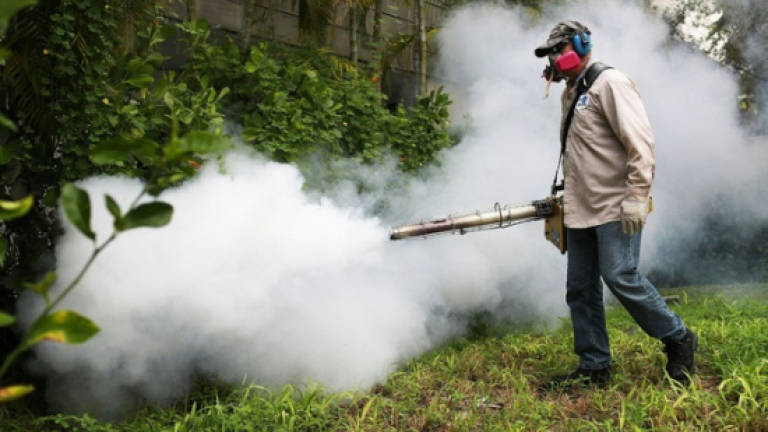Aerial pesticide 'key driver' of zika's end in Miami

MIAMI: The use of a controversial pesticide, sprayed from overhead on a Miami neighbourhood, was a "key driver" in ending the local spread of the zika virus there, US health officials said Friday.
Aerial spraying with naled, which is banned in the European Union, and with a larvicide called Bti provided a "one-two punch" that helped wipe out Aedes aegypti mosquitoes in the Wynwood neighbourhood of Miami, said Tom Frieden, chief of the US Centers for Disease Control and Prevention.
Wynwood was ground zero for the first US outbreak of locally transmitted zika, a virus which can cause birth defects and has spread rapidly through Latin America and the Caribbean.
From June 30 to August 5, 2016, there were 29 people with zika virus infection who were likely exposed within about six blocks of the hipster art district north of downtown Miami.
Ground-based applications of pesticide showed little effectiveness, and mosquito counts stayed high, raising concern that they might be difficult to kill.
But aerial spraying led to a "rapid dropoff in the mosquito count," Frieden said, describing the data as "really quite striking."
"At this point, aerial application appears to be our strongest tool," Frieden told reporters on a conference call.
"Aerial spraying appears to be a – if not the – key driver in this progress."
Short-term health unharmed
A complete report on the situation was released in the CDC Morbidity and Mortality Weekly Report.
"No increases in short-term health effects were associated with spraying," it said.
Calls to poison centres did not increase, nor did visits to emergency rooms compared with time periods before the spraying occurred.
The zika outbreak is not over in Florida. Miami Beach continues to experience local spread of zika, and aerial spraying has begun there, too.
The mainland United States has so far counted more than 3,300 travel-associated cases, meaning they involve people who were infected elsewhere.
zika can be spread by the bite of an infected mosquito or by sexual contact.
Florida is so far the only US state with local transmission, and has 95 such cases and more than 680 travel-related infections. A total of 90 pregnant women in Florida have been diagnosed with zika.
The virus is linked to the birth defect microcephaly, which causes newborns' heads to be abnormally small, and rare adult-onset neurological problems like Guillain-Barre Syndrome.
The US territory of Puerto Rico, which has seen more than 19,000 cases of zika, recently decided not to pursue aerial spraying, Frieden said.
Controversial tool
Naled has been used in the United States since 1959 as a common tool for mosquito control, despite concerns about its risks for human and environmental health.
The European Union prohibited its use in 2012, but the US Environmental Protection Agency assures it is safe if sprayed sparingly.
Some Miami residents have protested the use of naled, citing concerns for human and animal health.
Reports also surfaced earlier this month in South Carolina that millions of bees were killed after an aerial spraying of naled, following the confirmation of four zika cases there.
Frieden said he understood concerns about the potential risks, but said that officials used an "ultralow volume" of less than one ounce per acre, and sprayed early in the morning to minimize exposure to people and bees.
Since there is no vaccine to prevent zika, the evidence that aerial spraying could work was a boon to public health efforts.
Such an approach "has never before been proven to stop the spread of human disease," Frieden said.
"This really does herald a new era for control of local transmission." — AFP